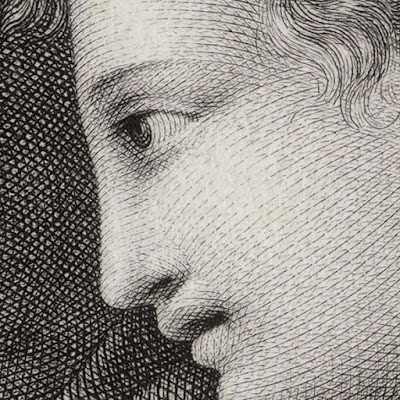Ernst Morace (1766–1806)
“Vénus et
Vulcain”, c1805 (1803–1809), after the painting of the same composition and a preparatory
drawing by the workshop of Giulio Romano
(1499–1546) in the Musée du Louvre (Paris) (Inv. 424; see https://commons.wikimedia.org/wiki/Category:Venus_and_Vulcan_-_Giulio_Romano_-_Louvre_INV_424),
after the intermediary draughtsman Jean
Pierre Granger (aka Jean Perrin Granger) (1779–1840), from the four volume series,
“Musée Francais” (aka “'Musée Français, recueil complet des tableaux, statues
et bas-reliefs qui composent la collection nationale, avec l'explication des
sujets et des discours historiques sur la peinture, la sculpture et la gravure”),
published by Robillard-Péronville (1750–1809)
and Pierre Laurent (aka Pierre
François Laurent) (1739–1809) in,
respectively, 1803, 1805, 1807, and 1809.
Note: Agostino Veneziano (aka Agostino dei Musi)
(fl.1509–1536) also made an engraving in 1530 in reverse of this composition, but
Veneziano attributes the design to Raphael rather than Romano, as inscribed on
the plate: “'RAPH.URB.DUM.VIVERET. INVEN.” (see BM No. H,2.24.+). The anomaly regarding who is the true designer is even more complex, as the Curator of the British
Museum explains:
[Veneziano’s
engraving is after] “… a Raphael design commissioned by Giovanni Battiferri to
be frescoed by Vincenzo di Sangimignano on the façade of his house in the
Vatican Borgo (Passavant). Vasari describes an identical composition in the
Life of Giulio Romano who painted it on the chimney of the villa of Messer
Girolamo, organist of the Duomo of Mantua.”
Etching and
engraving on heavy wove paper backed with a support sheet.
Size: (sheet) 52
x 37.5 cm; (plate) 46.8 x 34.7 cm; (image borderline) 37.9 x 24.8 cm.
Lettered on
plate below the image borderline: (left) “Peint par Jules Romain.”; (centre) “Dessiné
par Granger. / VÉNUS ET VULCAIN.”; (right) “Gravé par E. Morace.”
Massari 1993 13
(Stefania Massari 1993, “Giulio Romano pinxit et delineavit”, Roma); Nagler 16.
The British
Museum offers the following description of this print:
“Venus and
Vulcan, after Giulio Romano; at centre, Venus and Vulcan sit on the edge of a
bed, she plucking an arrow from Cupid's quiver with her right hand, and fingering
a plate of flowers with her left; Cupid holding his bow with both hands, turns
back to look at Venus; the plate of flowers is supported by two putti, while
two more play around Cupid; at left, through a doorway, a fifth putto tends a
fire.”
Condition:
richly inked, faultless impression with margins laid upon a support sheet of
archival (millennium quality) washi paper. The sheet is in near pristine
condition (i.e. there are no tears, holes, folds, abrasions, stains, foxing or
significant signs of use).
I am selling
this museum-quality etching (with engraving) with an intriguing history behind
the design of the composition—perhaps the most recent attribution (based on the
insights offered by the Curator of the BM [see No. 1859,0806.434]) is that two related
drawings at the Musée du Louvre are by Biagio Pupini (Inv. 3478) and from the
School of Raphael (Inv. 3657)—for
AU$247 (currently US$169.68/EUR153.84/GBP137.34 at the time of this listing)
including postage and handling to anywhere in the world (but not, of course,
any import duties/taxes imposed by some countries).
If you are
interested in purchasing this technical masterwork from the early 1800s, please
contact me (oz_jim@printsandprinciples.com) and I will send you a PayPal
invoice to make the payment easy.












No comments:
Post a Comment
Please let me know your thoughts, advice about inaccuracies (including typos) and additional information that you would like to add to any post.